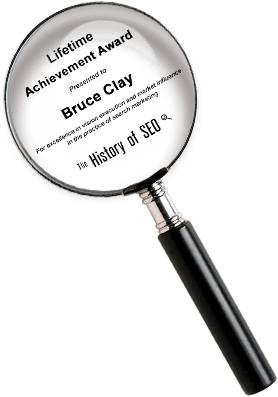How do I align my content with micro-moment personalization triggers?

- Overview
- What I Think
- Deep Dive: Map and Optimize for AI Visibility
- 24-Step Action Plan
- Quick Solutions
- About Us
Overview
Customers today don’t navigate a linear process — they take action at key moments in their journeys, oftentimes via micro-moments that represent short bursts where someone searches, clicks, decides or buys something. Each micro-moment provides you with a golden opportunity to appear, assist and convert but only if your content aligns with its trigger that initiated their journey.
Failing to match your content with a user’s moment of intent will make you invisible and irrelevant. To prevent that from happening, you’ll have to create personalized responses to emotional and informational triggers that your target audience is acting upon right now.
Here in this guide, we’ll help you figure out what those micro-moments are, map them to customized content responses and build SEO infrastructure that delivers real-time relevancy across all formats of search.
What I Think
In my experience, companies that miss search opportunities aren’t failing at SEO — they’re failing at empathy. They’re focusing on keyword volume or campaign messaging when optimizing their content instead of tailoring it to what the user is trying to do in that moment.
Visitors expect helpful, fast, and emotionally tuned responses. They want “show me,” “help me,” or “guide me” content instantly. If your website fails to deliver, they’ll be gone in seconds.
Most teams still create content in isolation — the brand team writes aspirational copy, the SEO team targets terms and the UX team focuses on layout. This fragmentation will cause your content to fail because it won’t address the moment of user need.
The best strategy is to reverse-engineer content from the user’s moment of action. Mapping triggers to intent, format and optimization creates visibility, engagement and conversion all at the same time.
Deep Dive: Optimize Micro-Moments for Maximum Conversions
Micro-moments tend to fall into four distinct but interlinked categories:
- I want to know
- I want to go
- I want to do
- I want to buy
Each type signals a different psychological trigger and decision phase. Your job is to know which one your audience is acting on, then respond accordingly.
Start with intent classification. For every core keyword or topic, ask: Is this user learning, comparing, acting, or transacting? For example, “best CRM software” is a “know” moment. “CRM demo video” is a “do” moment. “Salesforce pricing tiers” is a “buy” moment. Your content must match not just the term, but the state of mind.
Next, map those moments to page types and formats. “I-want-to-do” moments often need tutorials, checklists, or quick how-to videos. “I-want-to-buy” moments respond to comparison charts, reviews, and product landing pages with rich schema.
You also need to align timing. Micro-moments can happen across time zones, devices, or context shifts. A user might start a “know” search at lunch on mobile and finish a “buy” decision later at work. If your site doesn’t support seamless continuity — such as smart internal linking, breadcrumb trails, or retargeting — you lose the conversion.
Finally, structure your metadata, headings, and internal links to reinforce that you understand what the user wants at that exact stage. AI-powered search experiences like Gemini and SGE reward this specificity with snippet inclusion and higher ranking across multiple surfaces.
24-Step Action Plan
- Identify your top 50–100 converting queries
- Classify each query by micro-moment type (know, go, do, buy)
- Map each moment to existing content or identify gaps
- Create moment-specific templates (e.g., “do” = checklist + video)
- Train content teams on how to write for each intent state
- Embed personalization variables (device, location, time) into analytics
- Create internal links between moment types (e.g., from know → buy)
- Tag content in your CMS by moment type for dynamic display
- Add structured data that aligns with moment-specific schema types
- Develop a bank of micro-snippets tailored to “do” and “buy” triggers
- Use scroll and heatmap data to refine moment alignment
- Personalize CTAs based on referrer or session state
- Monitor bounce rates by moment classification to spot mismatches
- Include moment-triggered FAQs in landing pages
- Use AI tools to simulate user journeys at all micro-moments
- Refresh metadata every 90 days
- Check different formats (bullets, carousels and timelines) when planning “do” moments
- Make sure your UX layouts support skim-reading for quick answers
- Map retargeting lists to moment-intent buckets
- Train customer service or chatbot AI to use moment-aligned scripts
- Review search console click paths in order to optimize funnel entry
- Create alternate mobile-first versions for pages containing lots of moments
- Report weekly on visibility for AI Overview trigger terms
- Tie moment-aligned content to revenue or conversion metrics
Want your content to appear exactly when users need it most?
Work with our content experts and let’s align your SEO content to the moments that drive action, loyalty and revenue.
Quick Solutions
- How do I unify my marketing disciplines under a single operating system?
- How do I govern real-time AI SERP shifts without losing rankings?
- How do I build content for voice, video, and text AI surfaces at once?
- How do I diagnose visibility gaps in Gemini and AI Overviews?
- How do I prioritize content for AI snippet inclusion and funnel depth?
- How do I get buy-in for SEO beyond the marketing team?
About Us
At Bruce Clay Inc., we help brands optimize their content for the next generation of search experiences. Whether it’s SGE, Gemini, or visual voice interfaces, our structured content systems ensure your assets perform across every AI-driven format.
26,000+ professionals, marketers and SEOs read the Bruce Clay Blog
Subscribe now for free to get:
- Expert SEO insights from the "Father of SEO."
- Proven SEO strategies to optimize website performance.
- SEO advice to earn more website traffic, higher search ranking and increased revenue.

Comments are closed








